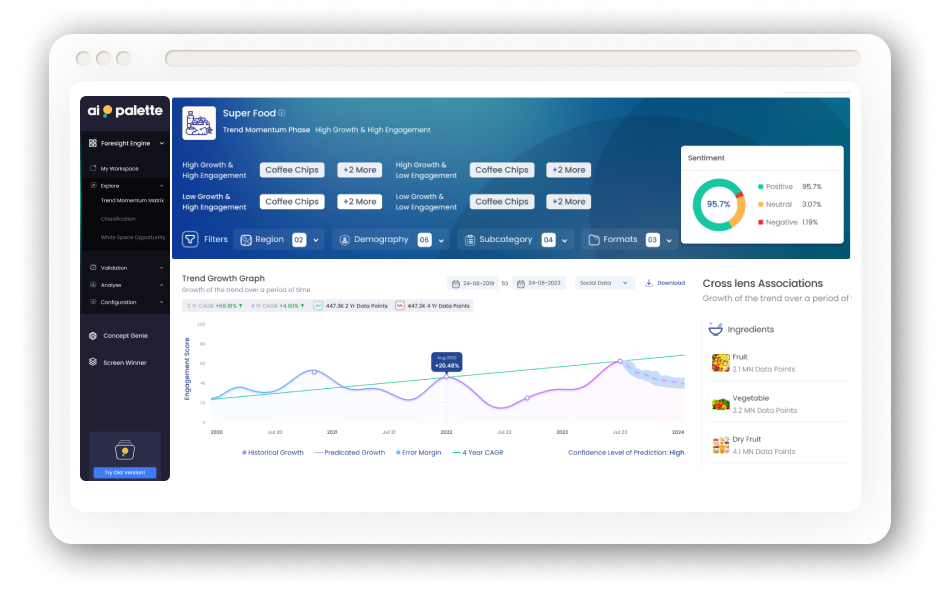The phrase “flavor-tripping parties” was what first piqued my interest, and like me, I’m sure many of you are thinking this is something rather naughty. But it’s as innocent as can be. At these parties, people are given a tablet that is to be dissolved in the mouth. They are then asked to taste a number of foods that wouldn’t normally be eaten on their own, like lemon, lime, vinegar, raw onion, raw mango, and so on. Surprisingly, this tablet makes consuming these foods easier by changing how we perceive their taste – and it’s natural.
A miracle treat
The “trip-inducing” ingredient in question here is miraculin, a glycoprotein extracted from a fruit called the miracle berry (or Synsepalum dulcificum, for the more botanically inclined), a tasteless red berry native to West Africa. When miraculin coats the tongue, it binds to the taste receptors and temporarily makes sour tastes seem like they are sweet. It can also alter tastes of pungency, bitterness, and heat to a certain extent for some. Making one of the potent sugar reduction ingredients.
Miraculin falls under the category of “taste-altering sweet proteins” and these sugar reducing ingredients have been gaining some traction in the sugar reduction space over the last few years. Currently, seven such proteins have been identified, with various degrees of sweetness (compared to sucrose), and all isolated from plants that are grown in tropical rainforests:
Brazzein
Curculin
Mabinlin
Miraculin
Monelin
Pentadin
Thaumatin
The concept behind miraculin and its ilk is that because these sweet proteins are not all sweet and instead can alter the perception of sweetness, they can help consumers reduce their sugar consumption without depending on sweeteners. In addition, because they are proteins, they don’t cause blood sugar spikes in the way that traditional sugar does nor do they negatively interact with the gut microbiome, like artificial sweeteners do.
Growth of sweet proteins within sugar reduction across different regions
Region | # of Sweet Proteins | Data Points | 2-Year CAGR | 4-Year CAGR |
Asia | 4 | 440 | 4.23% | 270.36% |
Europe | 4 | 16,505 | -91.00% | -82.33% |
North America | 6 | 3,483 | 37.34% | 15.05% |
Source: Ai Palette Foresight Engine (As of March 2023)
As these are relatively new ingredients, use and awareness of miraculin and the other sweet proteins are low, while different regions also have differing regulations regarding use. They have not been accepted as food additives in many parts of the world as there are not enough scientific studies. At the same time, there is positive consumer engagement for sweet proteins as a means to cut down on sugar and sweeteners.
In Europe, for example, the miracle berry is on the EU list of novel foods and the pitted and drier version is considered safe for use as or in food supplements with a maximum intake level of 0.7g a day (except for pregnant and lactating women).
In the US, miraculin is seen as a food additive and does not carry the Generally Recognized as Safe (GRAS) status. But miracle berries themselves can be cultivated and sold.
In Japan, there are no currently no restrictions on selling miracle berries.
Sweet Proteins AKA Sugar Reduction Ingredients
While sweet proteins do show a lot of potential as sugar reduction ingredient solutions, extracting them and producing them for bulk use has been a major challenge. A number of researchers and start-ups have been experimenting with new ways to manufacture them in bulk.
Spanish start-up Baïa Food is working on setting up a strong supply chain for miracle berries which includes sourcing from small farms in Ghana and using a proprietary processing method to make a steady supply of freeze-dried miracle berries. The company has developed fast-melt tablets that act directly on the taste buds to elicit the sweetness of other foods. Miraculin cannot be used in foods just yet in the EU, but the company is working on technologies to deliver miraculin as a novel food in food supplements.
California-based Joywell Foods – which now goes under the brand Oobli – uses microbial fermentation to produce nature-identical ultra-sweet proteins found in fruits and berries. The company uses a strain of pichia yeast in fermentation tanks to create sweet proteins that are bioidentical to those found in nature.
The company has launched a range of chocolates that incorporates oubli fruit sweet protein (brazzein).

Over the next few years, expect to hear more about this new set of ingredients in the sugar reduction toolkit.






















